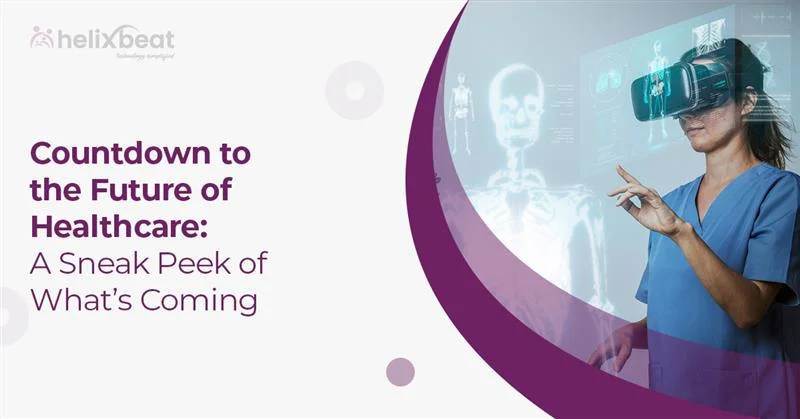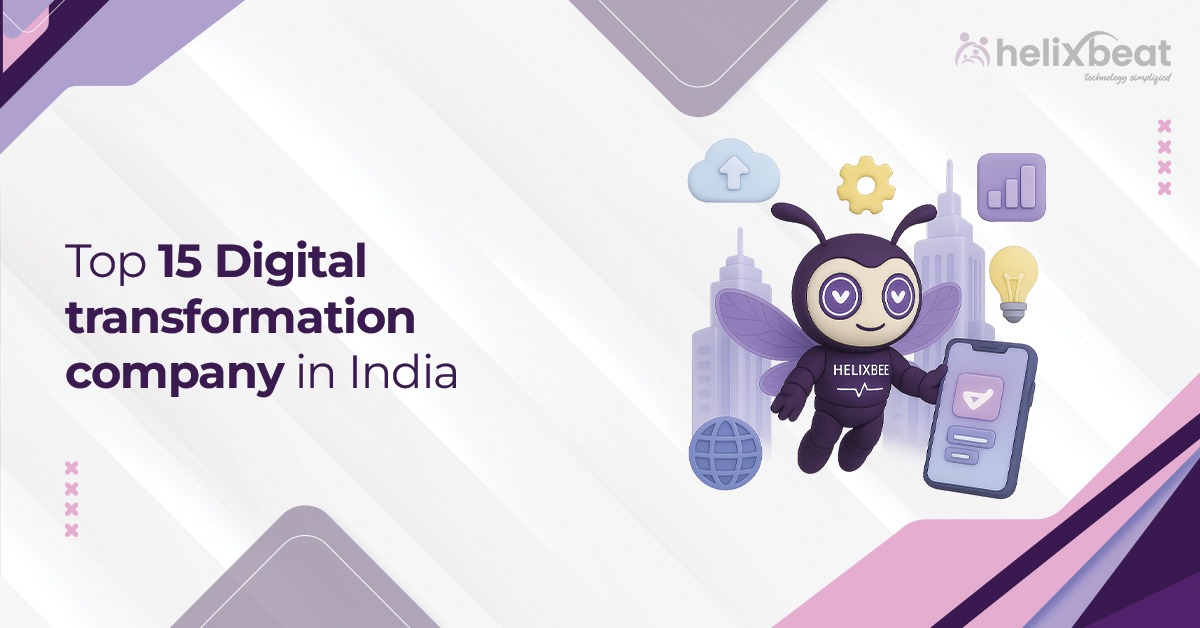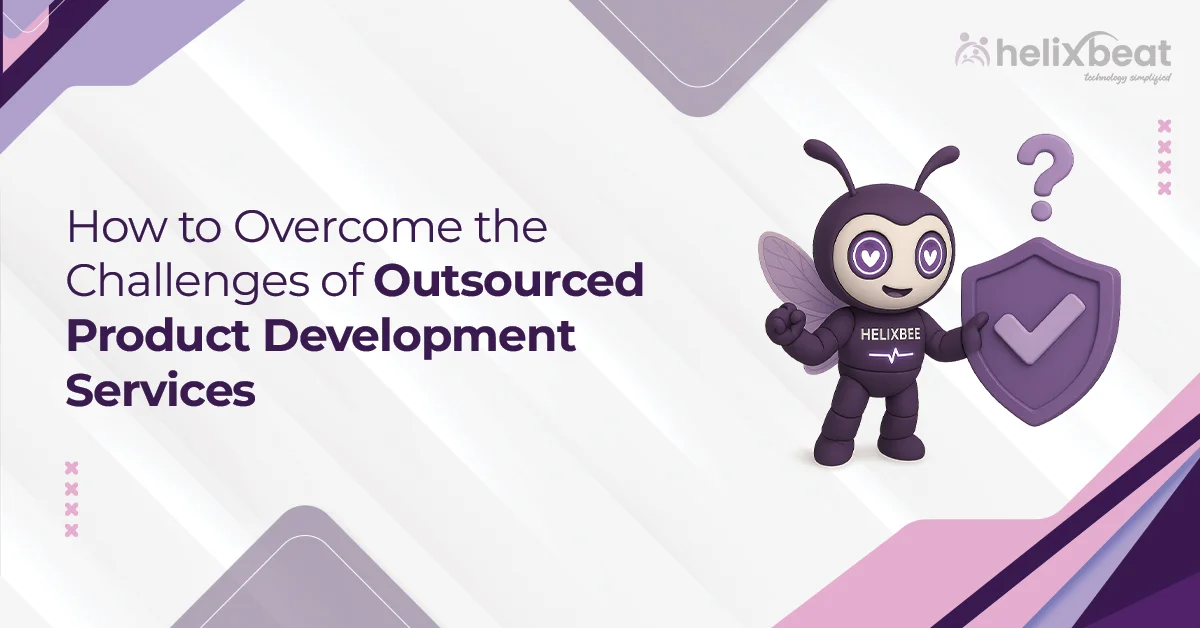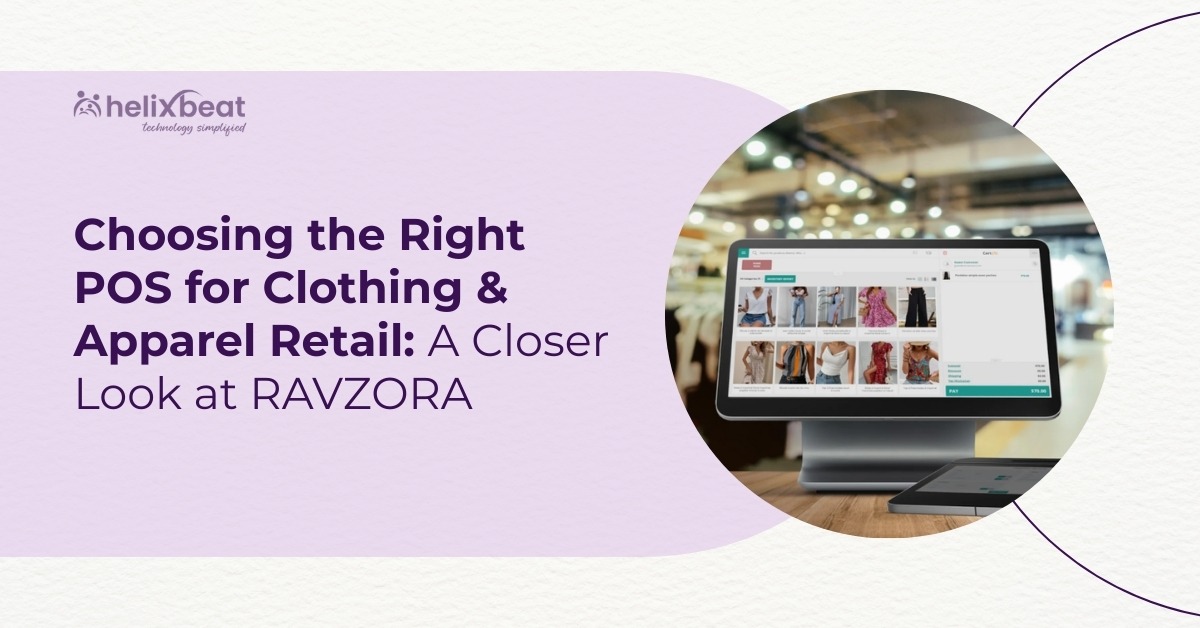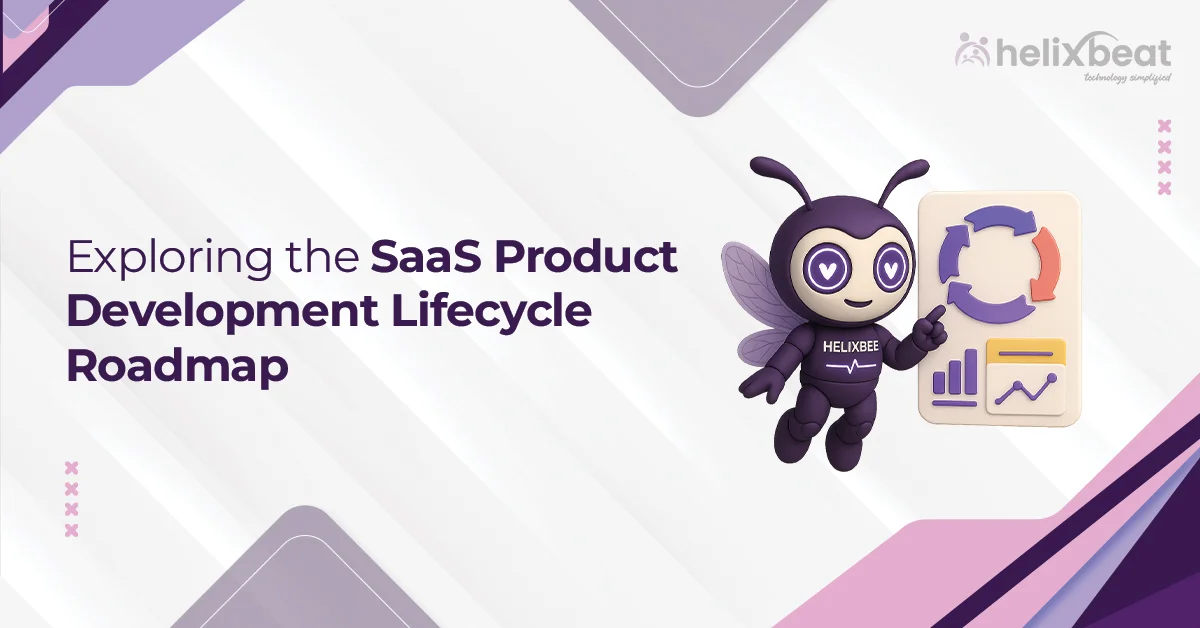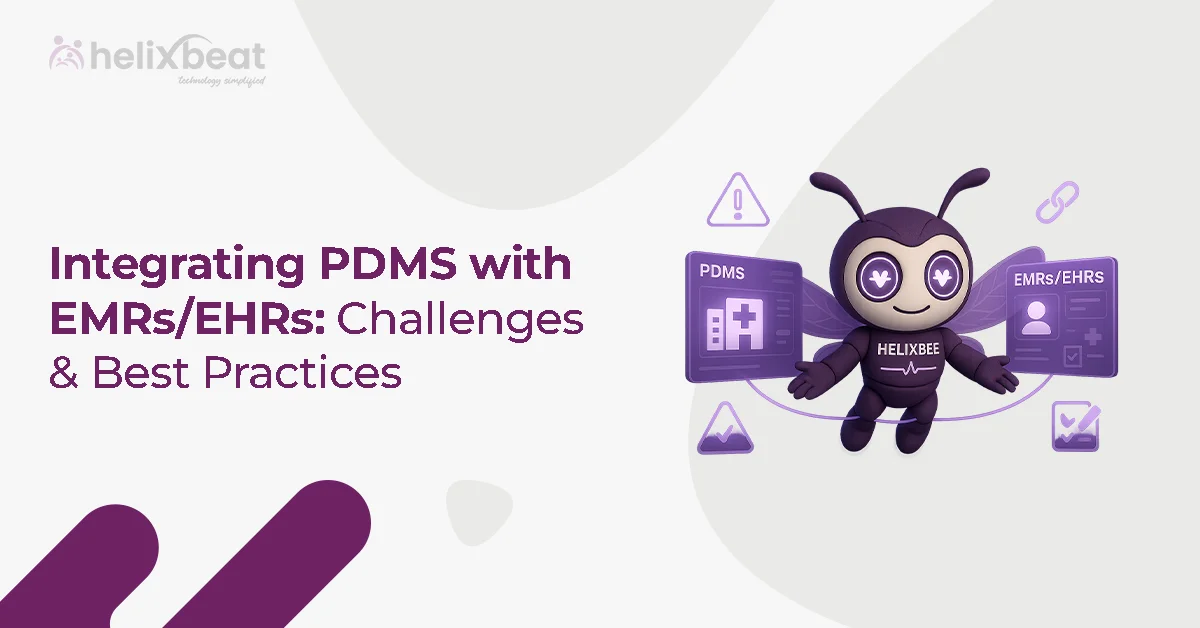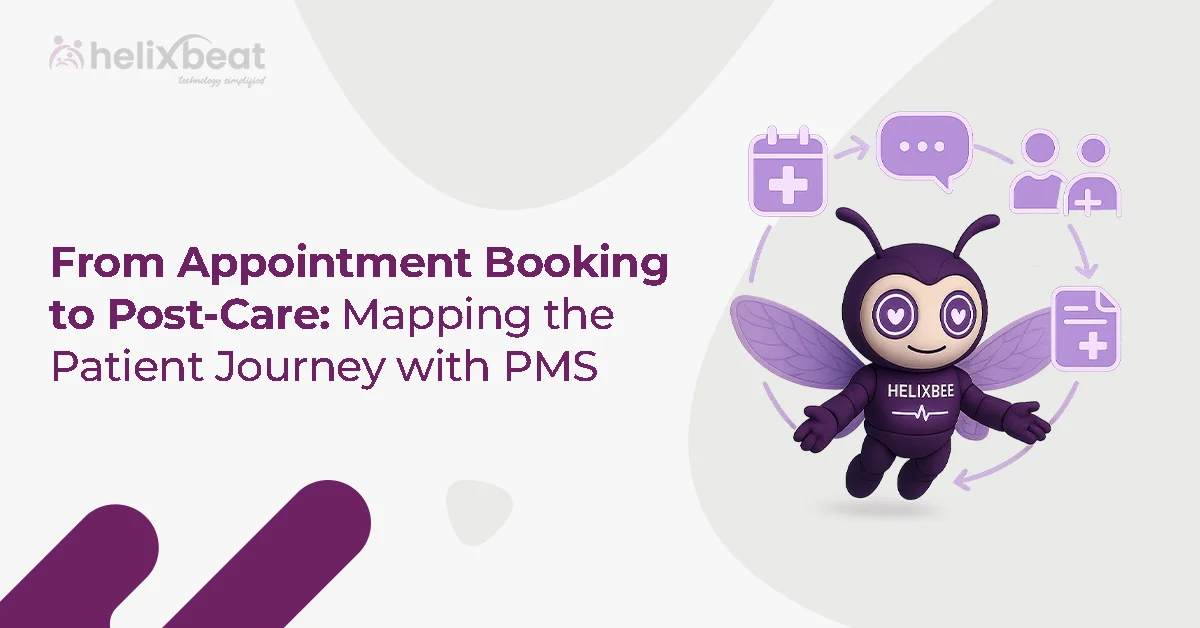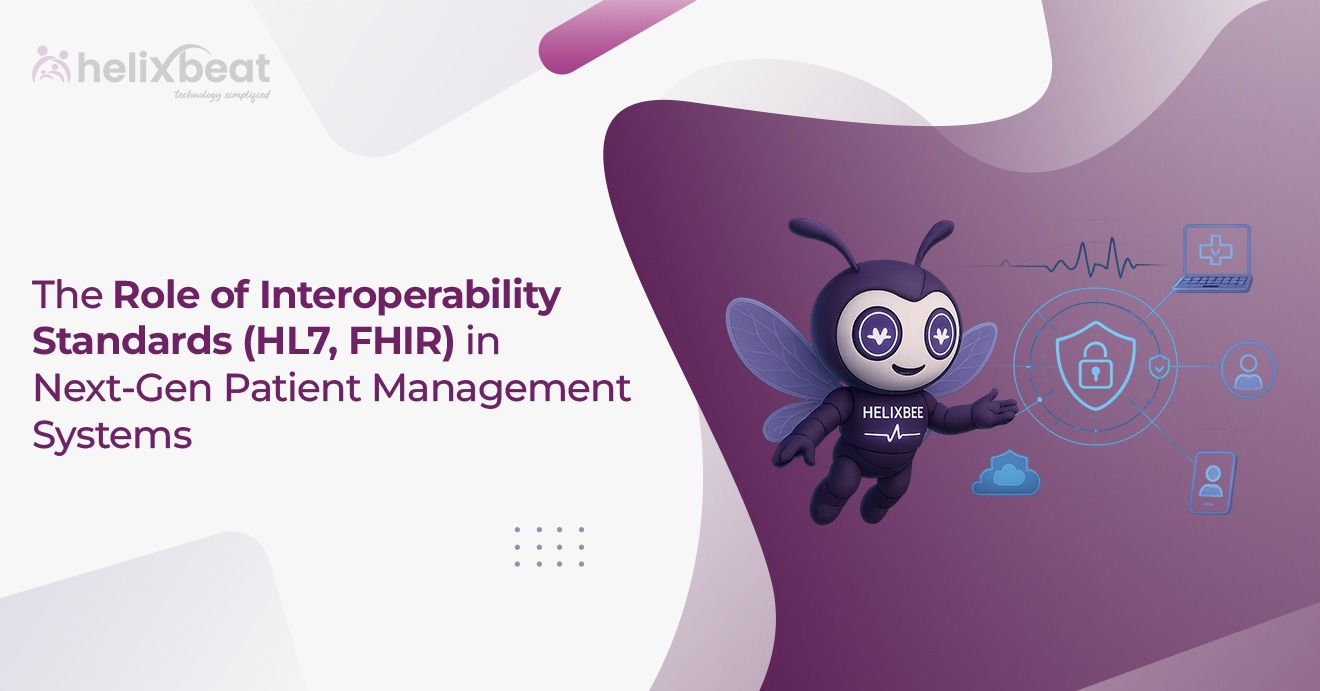Healthcare has always been a dynamic landscape. From revolutionary treatments to cutting-edge diagnostic technologies, innovation is at the core of its evolution. Yet, one challenge continues to hinder progress for healthcare providers, administrators, and patients alike: interoperability.
As we move into 2025, the need for seamless data sharing has become more critical. The surge in digitization has led to an explosion of healthcare data. However, much of this valuable information remains trapped in isolated systems. This fragmentation doesn’t just create inefficiencies—it directly impacts the quality of patient care.
Table of Contents
The Challenges of Interoperability
Imagine a patient named John transitioning from a local clinic to a specialized hospital for advanced care. However, the hospital lacks access to his previous medical records, lab results, and treatment history—all because the systems at the two facilities cannot communicate effectively. The result? Redundant diagnostic tests, treatment delays, and avoidable expenses. This is the reality for countless patients and healthcare providers, which highlights the urgent need for improved interoperability in the healthcare industry.
Here are some of the key challenges that underline the need for seamless interoperability:
1. Fragmented Data Across Systems
Healthcare providers often operate with a mix of incompatible software systems. These systems—whether electronic health records (EHRs), radiology tools, or lab reporting platforms—tend to create isolated “data silos.” Therefore, without a centralized data repository, the lack of a comprehensive patient history can lead to incomplete diagnoses and disjointed treatment plans.
2. Adopting Modern Standards
Interoperability frameworks like FHIR (Fast Healthcare Interoperability Resources) have become critical for facilitating data exchange across platforms. However, many healthcare organizations still rely on outdated or legacy systems that are incompatible with these modern protocols. Also, many people mistakenly believe that upgrading your entire IT infrastructure is necessary to adopt these technologies, which creates a big barrier.
3. Balancing Accessibility with Security
Sensitive health information must be shared across systems while safeguarding patient privacy and maintaining data security. This delicate balance presents a significant challenge. Cybersecurity threats such as ransomware attacks or data breaches are ever-present, and healthcare organizations must adopt advanced encryption and authentication mechanisms to protect patient information during data transfers.
4. Stagnation in Technological Advancements
Healthcare is increasingly relying on cutting-edge technologies such as AI and machine learning to revolutionize patient care. However, these innovations depend on access to large, diverse, and integrated datasets. When systems fail to communicate, it stifles the ability to leverage these transformative tools effectively. This limitation slows down research, predictive analytics, and the development of personalized treatment plans.
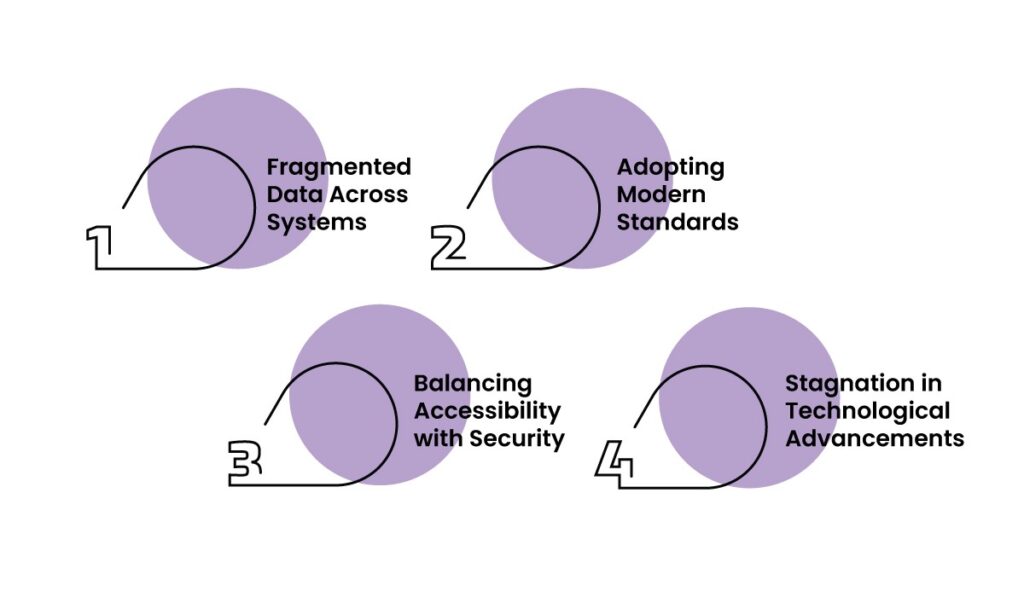
Introducing FUSION
The future of healthcare interoperability will take a monumental leap with FUSION by Helixbeat. But what exactly is FUSION?
FUSION is not just a product; it’s a promise—a promise to transform how healthcare systems interact, innovate, and improve lives. Designed with cutting-edge FHIR capabilities at its core, FUSION is the answer to interoperability challenges. Here’s what makes FUSION a standout solution:
1. Internal System Integration
FUSION revolutionizes how Electronic Health Record (EHR) systems communicate within a hospital. By acting as a central repository of patient data, FUSION eliminates the silos that hinder data sharing across departments. This significantly reduces data entry duplication and facilitates providers to access patient records effortlessly. As a result, care teams gain a comprehensive view of patient data in real-time.
2. Lab Result Standardization
Laboratory data often comes in varied formats, which makes it difficult to integrate into existing systems. FUSION seamlessly converts lab results into standardized, FHIR-compatible formats. This capability prevents redundant test orders by giving providers immediate access to clear, compatible results. Thus, FUSION not only optimizes workflows but also reduces resource wastage.
3. Streamlined Referrals
Referral management can be time-consuming, but FUSION simplifies it through automation and standardization. By creating error-free, comprehensive referral records, FUSION ensures specialists receive the full patient history without delays or gaps. This results in faster referral processing and empowers specialists to provide focused care.
4. Effortless Insurance Compliance
FUSION keeps healthcare organizations ahead of evolving regulatory requirements, particularly CMS interoperability mandates. Its robust compliance features streamline the submission of insurance claims by maintaining structured, standardized data. This reduces claim rejection rates, accelerates approvals, and strengthens cash flow for providers—all while simplifying the administrative workload associated with compliance.
5. Data Sharing with Partners
Collaboration between labs, pharmacies, and external providers is critical for comprehensive patient care. FUSION acts as a bridge by facilitating seamless data sharing in standardized formats across all stakeholders. This integration eliminates communication breakdowns and creates a unified care ecosystem.
6. Future-Ready Systems
FUSION is not just a solution for today—it’s built to prepare healthcare organizations for the technologies of tomorrow. Its adaptable architecture supports AI-driven analytics, which can help deliver predictive insights for better care planning. Also, FUSION facilitates the integration of Internet of Things (IoT) devices, thus empowering providers with real-time monitoring and actionable data. Therefore, healthcare organizations gain the scalability and flexibility needed to thrive in this digital landscape.
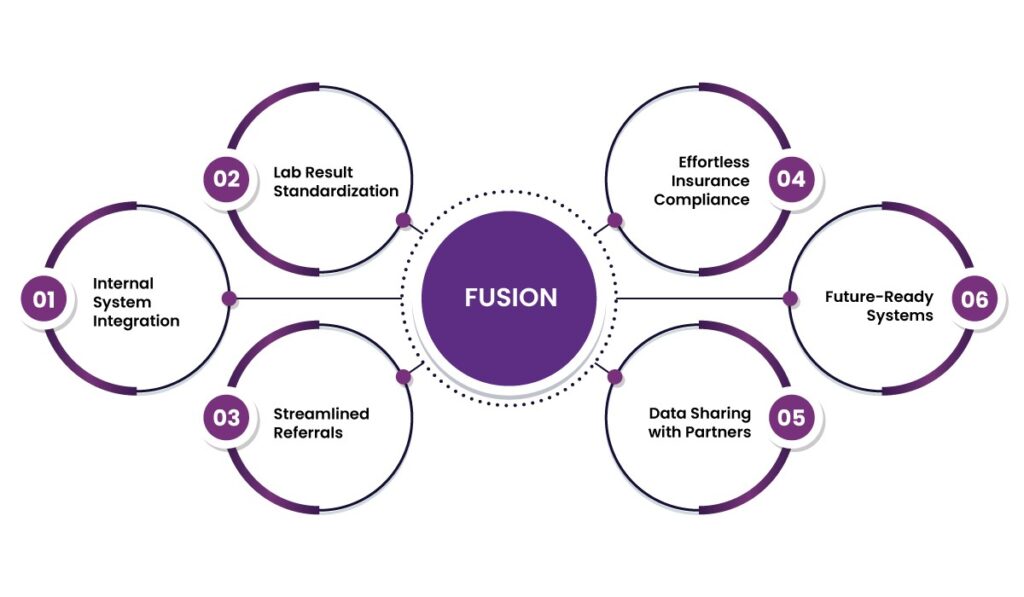
The Future Awaits
FUSION is more than an integration tool; it’s a comprehensive platform designed to transform healthcare systems. Its ability to connect fragmented systems, standardize data, and support compliance ensures that every aspect of care delivery is optimized.
So get ready to witness the dawn of a new era with FUSION. Contact us today!



